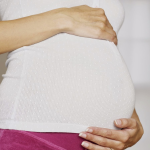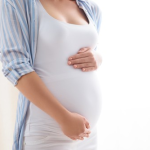
How PCOS Affects Fertility and What You Can Do
December 19, 2024
How to Navigate Fertility Challenges in Your 30s and 40s
December 19, 2024Endometriosis and Infertility: Finding Hope Amid the Challenges


Endometriosis and Infertility: Finding Hope Amid the Challenges
As a fertility specialist, I’ve encountered countless stories of heartbreak and resilience, but the ones involving endometriosis always stand out. This condition, where tissue similar to the lining of the uterus grows outside it, affects millions of women and is one of the leading causes of infertility. Each case is unique, but the emotional toll it takes is universal.
Let me share one story that left a lasting impression on me.

A Journey of Pain and Perseverance
Emma came to my clinic after three years of trying to conceive. At 34, she had a long history of painful periods, severe cramping, and fatigue. She’d been told by her gynecologist that these symptoms were “normal” and part of being a woman. But deep down, she knew something wasn’t right.
An ultrasound revealed that Emma had endometriosis, and a laparoscopy confirmed the diagnosis. She was relieved to finally have an answer, but also overwhelmed by what it might mean for her dream of becoming a mother.

What Is Endometriosis?
Endometriosis occurs when tissue similar to the uterine lining grows in places it shouldn’t, such as the ovaries, fallopian tubes, or pelvic lining. This tissue responds to hormonal changes, causing inflammation, scarring, and sometimes the formation of cysts called endometriomas.
Dr. Linda Griffith, a leading researcher in women’s health, explains, “Endometriosis is not just a reproductive disease; it’s a systemic condition that can impact a woman’s entire body.”
For Emma, the endometriosis was primarily affecting her ovaries, creating an environment that made it difficult for eggs to develop and release properly.
How Endometriosis Impacts Fertility
Endometriosis can affect fertility in several ways:
- Scar Tissue and Adhesions: These can distort the pelvic anatomy, making it harder for the egg and sperm to meet.
- Inflammation: Chronic inflammation can harm egg quality and interfere with implantation.
- Endometriomas: These cysts on the ovaries can reduce ovarian reserve and compromise the eggs.
Emma’s case involved significant scarring and reduced ovarian function. This combination made natural conception unlikely, but it didn’t mean we were out of options.
Diagnosing Endometriosis
One of the biggest challenges with endometriosis is how long it often takes to diagnose. On average, women wait 7-10 years before receiving a diagnosis. Symptoms are frequently dismissed as “normal” period pain, which delays treatment.
For most patients, we use a combination of:
- Symptom History: Painful periods, pain during intercourse, and chronic pelvic pain are red flags.
- Imaging: Ultrasounds can detect endometriomas, but smaller lesions may not show up.
- Laparoscopy: This minimally invasive surgery is the gold standard for diagnosis and treatment.
Treating Endometriosis-Related Infertility
When it comes to helping women with endometriosis conceive, there’s no one-size-fits-all approach. Here’s how we typically proceed:
- Surgical Treatment
- Laparoscopic surgery can remove scar tissue, adhesions, and endometriomas, improving fertility.
- While surgery helped reduce Emma’s pain, her ovarian reserve remained low, which brought us to the next step.
- Ovulation Induction and IUI
- For mild cases, medications like Clomiphene Citrate or Letrozole can stimulate ovulation.
- Intrauterine insemination (IUI) may also be an option, depending on the extent of the disease.
- In Vitro Fertilization (IVF)
- For many women with moderate to severe endometriosis, IVF is the best option. It bypasses the damaged fallopian tubes and scarred pelvic tissue.
- Emma and her husband decided to pursue IVF after discussing its success rates and what to expect.
As Dr. Jeffrey Braverman once said, “IVF offers hope where natural conception may not, particularly for women battling the hidden complexities of endometriosis.”
The Emotional Toll
Endometriosis isn’t just physically debilitating—it’s emotionally exhausting. Many patients feel frustrated by years of being dismissed or misunderstood. The pain of infertility adds another layer of heartache.
Emma often expressed guilt, wondering if she had done something to cause her condition. I reminded her, as I remind all my patients, that endometriosis is not her fault. Seeking help and taking action is a sign of strength, not failure.
A Happy Ending
After two cycles of IVF, Emma finally saw those two pink lines on her pregnancy test. She carried her baby boy to term and has since become an advocate for endometriosis awareness.
Her journey wasn’t easy, but it was a powerful reminder that even the most challenging cases can have a joyful ending.
Final Thoughts
Endometriosis is a complex and often misunderstood condition, but it’s not insurmountable. Advances in fertility treatments and a deeper understanding of the disease are helping more women achieve their dreams of parenthood.
If you suspect you have endometriosis or are struggling to conceive, don’t wait to seek help. With the right care, support, and determination, there’s hope.

